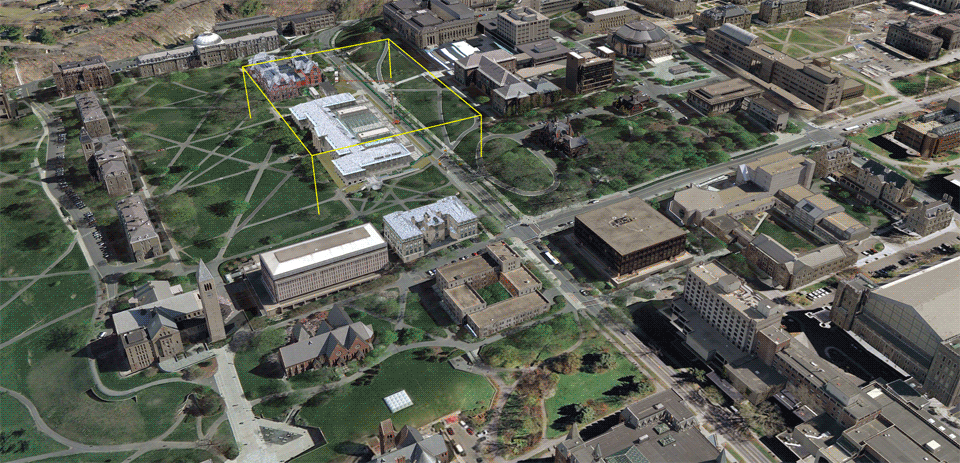 |
Vinci A9168Ivy Academic Hall Expansion |

Vinci · Behind the Scenes | Campus Context.
Worksite context at most common building locations is important for several basic reasons, but it is absolutely paramount in a major campus environment. The main reason: traffic.
Worksite context helps your audience self-orient, eliminating much of the orientation discussion from your presentation so you can focus on more important things. Context is more relevant when construction involves adjacent existing improvements, such as expansions, additions, tie-ins, or close approaches. The items around your worksite are even more important, but require less detail when construction will alter traffic patterns, or where you'll need to help people find their way due to a temporary or permanent change in the usual traffic pattern.
A large healthcare, industrial, commercial, or academic campus features stakeholders frequently travelling between facilities in a multitude of destinations and paths. This academic campus is vast, with a high student population and a great deal of destinations connected by pedestrian paths. A main campus road channels public transportation, delivery traffic, and through traffic right next to the worksite. The work will definitely affect normal transit in this area.
Attention to worksite context can enhance a construction strategy by helping it factor in pedestrian and vehicular traffic experiences. This project provided a traffic channelization routing and signage plan; we can show how this plan works in the specific context of our particular strategy. We can also cover instances of pedestrian transit from any direction. Such visualization can be presented to user groups for awareness during construction.
A good construction strategy on a busy campus does not ignore worksite context.
This page last modified Friday 27 September 2013.